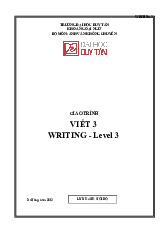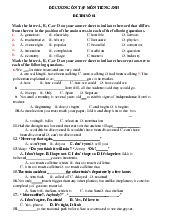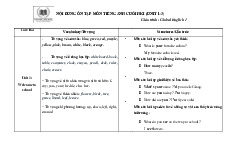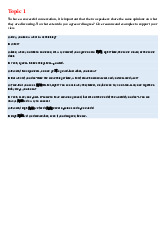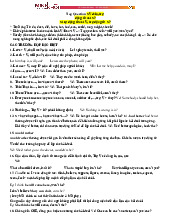


Preview text:
lOMoAR cPSD| 48541417
Students are only allowed to use mono-lingual dictionaries and cannot use any other
materials or electronic devices.
Read the article below and complete the tasks provided.
RUSSIA CONTINUES TO ADVANCE IN EASTERN UKRAINE
But it is encountering growing problems
1. Now that the excitement of Ukraine’s incursion into Kursk two months ago has faded,
the prevailing narrative has reasserted its grip. Ukrainian forces are retreating in the
face of steady Russian advances across the front line in the Donbas, thanks to Russia’s
vast superiority in troop numbers and firepower.
2. The Ukrainian decision last week to pull its forces out of Vuhledar, a staunchly
defended bastion that lies on the hinge of the eastern and southern fronts, has added to
the gloom about the country’s prospects. The retreat was ordered to prevent their
encirclement by the Russians. President Volodymyr Zelensky praised the decision,
saying that protecting the lives of the soldiers who had given “heroic service” was “more
important than any buildings”.
3. A similar situation appears to be developing to the north in Toretsk, a front-line city that
Russian forces have been advancing towards, village by village, since August,
pulverising everything in their path with glide bombs. On October 8th, a spokeswoman
for the Ukrainian forces in the city reported that “The fighting is taking place in Toretsk
itself, the situation is unstable, literally every entrance is being fought for.” Though
Vuhledar was not of great strategic significance, Toretsk, which is on a hilltop, could
be used to obstruct Ukrainian supply routes behind the lines.
4. On the other hand, Russia has not made much progress in taking Chasiv Yar, some
40km to the north of Toretsk, and appears to be stuck by the canal on the eastern side
of the city. It is also making heavy weather of its bid to take control of Pokrovsk, a key
logistics hub that sits on a triangle of road and rail links and which is the main focus of its 1
offensive efforts. In August, there was much talk of the imminent fall of Pokrovsk. But the
pace of the Russian advance has noticeably slowed, with few territorial gains in the past three weeks.
5. Nico Lange, a former chief of staff in Germany’s Ministry of Defence who has close
links to the Ukrainians, says that although Russian troops are now in artillery range of
the city, they lack the force numbers to make a concerted attack. While taking
Pokrovsk would give Russia a launch-pad for attacks deeper into central Ukraine and
would worsen Ukraine’s logistical position in southern Donbas, Mr Lange believes the
operation, even if successful, will take many months and inflict extremely heavy losses on the Russians. lOMoAR cPSD| 48541417
6. Despite fears expressed in some quarters of a Ukrainian collapse, there is no sign of
one. Ukraine’s approach is to concede some ground while inflicting maximum
casualties and equipment losses on Russia and preserving its own forces to fight from
newly fortified lines. It is also questionable how much longer Russia can continue to
lose more than a thousand men a day, despite huge signing-on bonuses for new recruits.
The seemingly inexhaustible stocks of mainly Soviet-era armoured vehicles and tanks
it has been able to draw on could be running low by next year. The Institute for the
Study of War in Washington reckons that in the Pokrovsk region alone Russia has lost
at least five divisions’ worth of tanks and armoured vehicles in the past year. Without
sufficient armour, dismounted Russian soldiers are easy prey for increasingly capable Ukrainian FPV drones.
7. There are also signs that Russia’s advantage in artillery has been declining, even as it
increasingly depends on unreliable North Korean munitions. Earlier this year, Russia
was firing ten times as many shells as the Ukrainians. But according to Ukrainian
sources, the gap has now closed to 2.5:1. Ukraine is receiving more shells from its allies;
its own production has speeded up; and strikes on Russian ammunition storage depots
have been both effective and spectacular. However, Ukraine, still forbidden to use long-
range Western missiles against targets in Russia, has no answer to the deadly glide
bombs launched by aircraft from Russian airspace that have become its adversary’s
most potent battlefield weapon.
8. For all the current despondency about Ukraine’s prospects, Russia is far from
achieving its main aim: of gaining control over Donetsk and Luhansk provinces, which
make up the Donbas region, by the end of this year. And despite setting the goal of
driving Ukrainian forces from Kursk by the start of this month, it now looks as if that
will take much longer and require substantially greater forces than Moscow has so far been able to commit.
9. The battle where Russia is unambiguously succeeding, says Mr Lange, is in the
“information space”. The notion that Ukraine cannot win, he argues, is becoming a self- 2
fulfilling prophecy and an excuse for Western leaders to withhold from Ukraine what it
needs to prevail. A pattern has emerged in which promised military support arrives late or
not at all. As Phillips O’Brien, an American commentator, has noted, American aid actually
disbursed to Ukraine so far this year is sharply down on the amount sent in 2023. Adapted from The Economist
I. Explain the meaning of the following expressions as used in the article (1.5 points)
1. the prevailing narrative has reasserted its grip (P 1)
2. make a concerted attack (P 5)
3. despondency about Ukraine’s prospects (P 8) lOMoAR cPSD| 48541417
II. Comprehension (4.5 points)
Read the article and answer the following questions in your own words.
1. How have the Russian progressed into Ukrainian territory lately?
2. Why are the Russian likely to be at a disadvantage in the Ukraine war?
3. How has the broader narrative of Ukraine losing affected the country, and what is an example of this impact?
III. Summary (2 points).
Summarize the main ideas of paragraphs 6 and 7 into 3-4 sentences (60-80 words).
IV. Translation (2 points).
Translate paragraph 7 into Vietnamese.
--------------------------------------Hết--------------------------------------
Ghi chú: - Đề thi gồm có 03 trang;
- Thí sinh không được sử dụng bất cứ tài liệu nào.
- Cán bộ coi thi không giải thích gì thêm. 3
